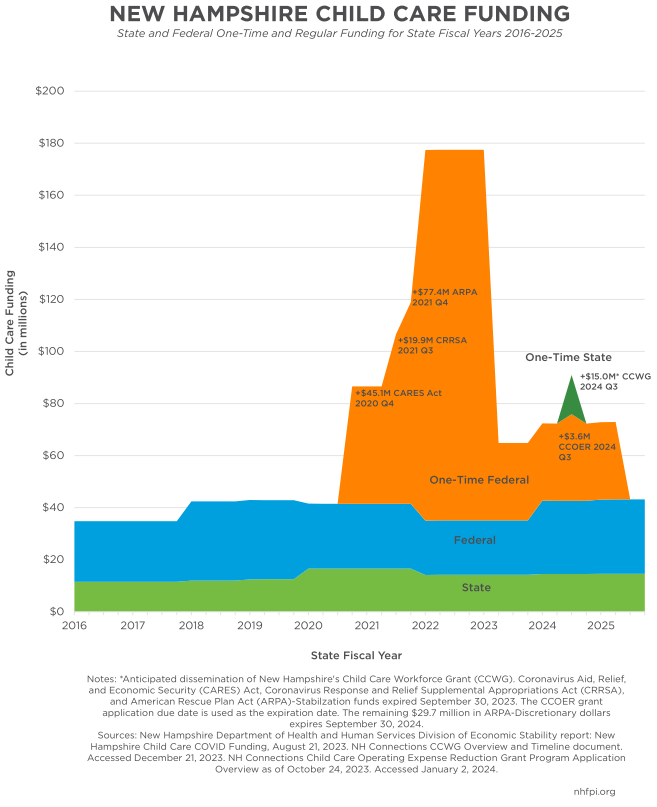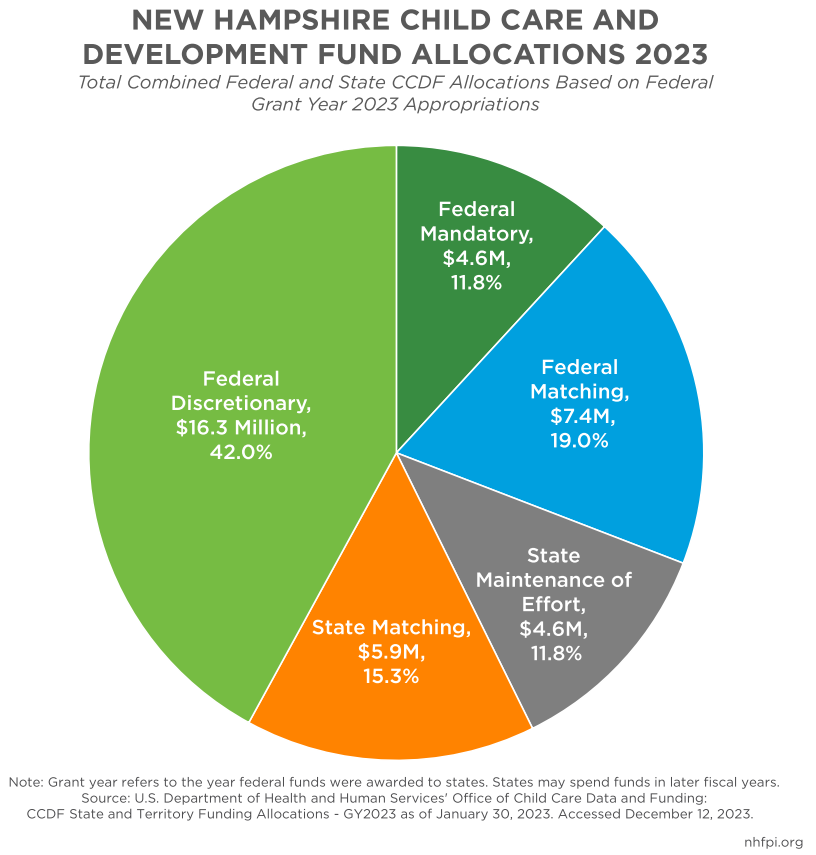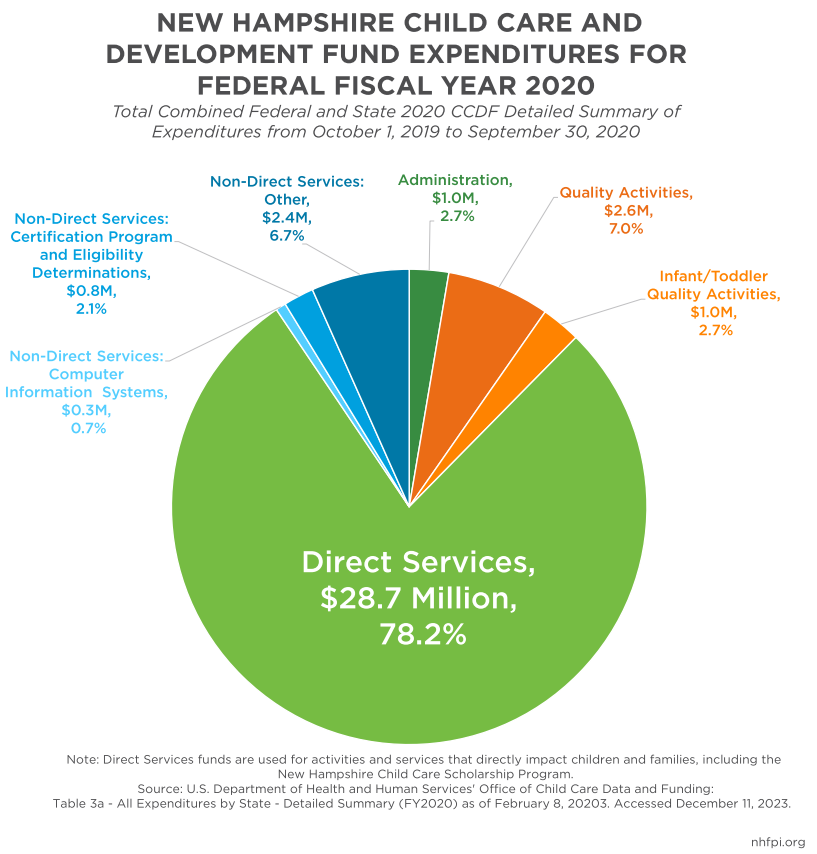Since State Fiscal Year (SFY) 2016, over $555 million in federal and State funding has been, or is currently being, deployed by New Hampshire to support the child care sector. Of those funds, $145.9 million (26 percent) are one-time federal relief dollars associated with the COVID-19 pandemic that have either already expired or will expire by September 30, 2024. An additional $15 million (3 percent) are one-time State funds intended for child care workforce recruitment and retention to be distributed in SFY 2024.
Federal Funding Key for State Child Care Supports
Many U.S. child care subsidies and infrastructure supports are funded through the Child Care and Development Fund (CCDF), a state-federal partnership that assists families with low-incomes in affording child care and supports the delivery of high-quality programs. The allocation formula for CCDF funding streams is derived from a variety of factors, including a state’s share of children receiving free and reduced priced lunches and children under 5 years old, state per capita income, and state and federal funds previously allocated as part of the repealed federal Aid to Families with Dependent Children (AFDC) policies. The federal government provides discretionary, mandatory, and matching funds, while states must provide matching and maintenance of effort contributions to the fund. In 2023, New Hampshire’s CCDF fund totaled approximately $38.7 million, of which $10.5 million (27.1 percent) were State funds.
In the SFYs 2024-2025 New Hampshire State Budget, the Granite Steps for Quality (GSQ) program and support for the administration of New Hampshire’s Child Care Scholarship Program (NHCCSP) are 100 percent federally funded. The scholarships for the NHCCSP are funded through both federal dollars and State General Funds to ensure low- and moderate-income families have safe, consistent child care so parents can work or engage in other approved activities. In SFY 2023, the NHCCSP served nearly 3,000 children per month, with an annual expenditure per child of nearly $10,000, approximately 45 percent of which was paid by the State and 55 percent paid using federal funds. A portion of CCDF funding also supports staff positions for monitoring child care programs and coordinating criminal background checks for child care employees at the Child Care Licensing Unit within the New Hampshire Department of Human Health and Services.
In Federal FY 2020, the most recently available report reveals that 78.2 percent of CCDF funds were used for direct child care services. Other funds went toward quality activities such as New Hampshire’s GSQ incentives (7 percent), infant/toddler quality activities that increase the supply and quality of care for children under 2 years old (2.7 percent), and administration of the funds (2.7 percent). The remaining 9.4 percent of funds were used for non-direct child care services.
Additional, Stable Funding May be Needed to Ensure Industry Stability
While approximately $160 million in State and federal one-time funding has been allocated to New Hampshire’s child care infrastructure since 2020, most of this funding was intended to stabilize the industry and replace lost income for child care providers. Only American Rescue Plan Act-Discretionary funds, approximately 18 percent of the one-time funds, were allocated to address the long-term health of the child care sector in New Hampshire; those funds must be used before the end of September 2024. After this funding source is gone, the public finances dedicated to supporting New Hampshire’s child care sector will be reduced to the same levels that preceded 2020. Without additional consistent, long-term investments in child care infrastructure, the same challenges will likely continue to impact the child care market, New Hampshire’s workforce, and the overall Granite State economy.
Combining child care sector investments with other federal- and State-funded infrastructure projects is one way New Hampshire could simultaneously prioritize funding for child care with other areas of investments, including housing and transportation. These investments could support workers with different specialties to engage in employment if they choose to do so, rather than caring for a child at home, boosting economic growth and enhancing opportunities for Granite State individuals, families, and children. For more analysis and citations, see NHFPI’s February 2024 Issue Brief The State of Child Care Funding in New Hampshire: End of One-Time Federal Investments May Reduce Industry Stability.



